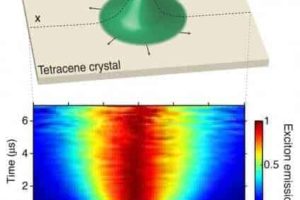university of sheffield
Swarms of bees could unlock secrets to human brains
Scientists at the University of Sheffield believe decision making mechanisms in the human brain could mirror how swarms of bees choose new nest sites.
Striking similarities have been found in decision making systems between humans and insects in the p…
Researchers map out ice sheets shrinking during Ice Age
A set of maps created by the University of Sheffield have illustrated, for the first time, how our last British ice sheet shrunk during the Ice Age.
Led by Professor Chris Clark from the University’s Department of Geography, a team of experts …
Study finds food in early life affects fertility
The reproductive success of men and women is influenced by the food they receive at an early stage in life, according to new research by the University of Sheffield.
The research, which was published online this month (17 December 2010) in the jo…
Very large protected areas preserve wilderness but ignore rare species
Protected areas are generally seen as a triumph for the preservation of nature, yet the reality on the ground is more complex.
The world’s largest protected areas encompass vast amounts of wilderness but do not extensively overlap the highest prio…
Research brings cure for Parkinson’s disease a step closer
An international collaboration led by academics at the University of Sheffield, has shed new light into Parkinson’s disease, which could help with the development of cures or treatments in the future.
The collaboration, which was led by Profes…
Breakthrough in drug trial offers hope for heart attack patients
New findings from a major drug trial have brought experts a step closer to developing a drug which could prevent thousands of British deaths from heart attacks.
Dr Robert Storey, Reader at the University of Sheffield and Consultant Cardiologist a…
New Molecular Self-Assembly Technique May Mimic How Cells Assemble Themselves
Researchers report that they have created tree-like molecules that assemble themselves into precisely structured building blocks of a quarter-million atoms. Such building blocks may be precursors to designing nanostructures for molecular electronics or photonics materials, which “steer” light in the same way computer chips steer electrons.

